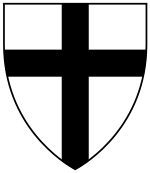 |
|
Administrative Structure of the Teutonic Order
Universal leadership of the Teutonic Order Generalkapitel The Generalkapitel (general chapter) was the collection of all the priests, knights and half-brothers (German: Halbbrüder). Because of the logistical problems in assembling the members, who were spread over large distances, only deputations of the bailiwicks and commandries gathered to form the General chapter. The General chapter was designed to meet annually, but the conventions were usually limited to the election of a new Grandmaster. The decisions of the Generalkapitel had a binding effect on the Großgebietigers of the order.
Hochmeister of the Teutonic Order The Hochmeister (Grandmaster) was the highest officer of the order. Until 1525, he was elected by the Generalkapitel. He had the rank of ruler of an ecclesiastic imperial state and was sovereign prince of Prussia until 1466. Despite this high formal position, practically, he was only a kind of first among equals. Großgebietiger The Großgebietiger were high officers with competence on the whole order, appointed by the Hochmeister. There were five offices.
   National Leadership Landmeister The order was divided in three national chapters, Prussia, Livland and the territory of the Holy Roman Empire of the German Nation. The highest officer of each chapter was the Landmeister (country master). They were elected by the regional chapters. In the beginning, they were only substitutes of the Grandmaster but were able to create a power of their own so that, within their territory, the Grandmaster could not decide against their will. At the end of their rule over Prussia, the Grandmaster was only Landmeister of Prussia. There were three Landmeisters:
Regional Leadership Because the properties of the order within the rule of the Deutschmeister did not form a contiguous territory, but were spread over the whole empire and parts of Europe, there was an additional regional structure, the bailiwick. Kammerbaleien("Chamber Bailiwicks") were governed by the Grandmaster himself. Some of these bailiwicks had the rank of imperial states
Local Leadership Komtur The smallest administrative unit of the order was the Kommende. It was ruled by a Komtur, who had all administrative rights and controlled the Vogteien (district of a reeve) and Zehnthöfe (tithe collectors) within his rule. In the commandry, all kinds of brothers lived together in a monastic way. Noblemen served as Knight-brothers or Priest-brothers. Other people could serve as Sariantbrothers, who were armed soldiers, and as Half-brothers, who were working in economy and healthcare. |








